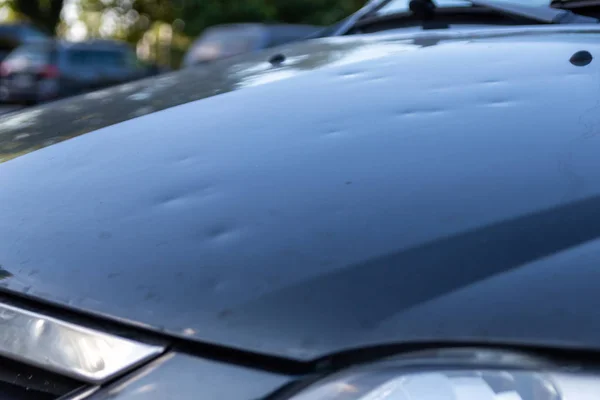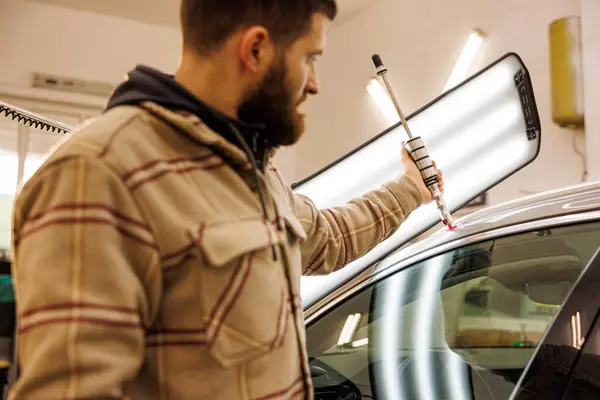Affordable Hail Dent Repair: Bringing Your Vehicle’s Body Back To Perfection
Hail damage is an unfortunate reality for many vehicle owners, especially in regions prone to severe weather. Fortunately, there are affordable and effective hail dent repair options that can restore your vehicle to its former glory. This comprehensive guide explores various repair methods, factors affecting costs, and tips for choosing the right service.
Understanding Hail Damage
Hailstorms can cause a range of damage to vehicles, from minor cosmetic dings to more severe dents. The severity of damage often depends on the size of the hailstones and the intensity of the storm. Small hailstones may create superficial dents that are easier and cheaper to repair, while larger hailstones can result in significant damage that might require more extensive repairs.
Common Areas Affected by Hail
- Roof: Often the most affected area, especially for parked vehicles.
- Hood: Frequently dented as it faces upwards and is less protected.
- Trunk: Also vulnerable, particularly if the trunk is left exposed.
- Doors: Side panels can suffer from hail damage, though they are generally less affected than the roof and hood.
Types of Hail Dent Repair Methods
Paintless Dent Repair (PDR)
Paintless Dent Repair (PDR) is a highly effective method for repairing hail damage without needing to repaint the vehicle. It involves using specialized tools to gently push the dent out from behind the panel. This method is advantageous because it preserves the vehicle's original paint, avoiding the need for color matching and reducing the overall repair time.

Advantages of PDR:
- Cost-Effective: Generally cheaper than traditional repair methods.
- Quick Turnaround: Often completed in a few hours to a day.
- Original Paint: Maintains the vehicle's original paint job, avoiding issues with color matching.
Traditional Dent Repair
Traditional dent repair, also known as body repair, involves filling dents with a body filler, sanding the area smooth, and repainting it. This method is typically used for more severe damage or when the paint has been cracked or chipped. While it is effective for restoring the vehicle’s appearance, it is more time-consuming and expensive than PDR.
Process:
- Assessment: Evaluating the extent of damage.
- Filling: Applying body filler to the dented area.
- Sanding: Smoothing the filled area to blend with the surrounding surface.
- Painting: Repainting the area to match the original color.
Factors Influencing Repair Costs
Extent of Damage
The extent of hail damage varies based on hailstone size and storm intensity. Minor dents are often shallow and can be repaired affordably with paintless dent repair, while larger or more numerous dents may require traditional repair methods. Severe damage can affect multiple areas and necessitate more extensive and costly repairs. Prompt assessment is crucial to determine the appropriate repair approach.

Location of Dents
The location of dents greatly impacts both the complexity and cost of repairs. Dents on more accessible areas, such as the hood or doors, are generally easier and less expensive to fix. However, dents on the roof or edges of panels are more challenging due to limited access, often requiring specialized tools and techniques. The difficulty in reaching these areas can increase labor time and overall repair costs. Proper assessment is essential to determine the most effective and economical repair approach.
Vehicle Make and Model
The make and model of your vehicle can influence repair costs and complexity. Luxury or high-end vehicles may require specialized techniques and materials, leading to higher repair expenses. Additionally, the intricacy of the vehicle’s design and the availability of replacement parts can affect both the repair process and the overall cost. Vehicle-specific factors should be considered when estimating repair expenses. Discover everything you need to know about hail dent repair.
Choosing the Right Repair Service
Research and Reviews
Researching local repair shops and reading customer reviews are crucial steps in selecting a quality service provider. Online reviews can offer insights into the shop’s reputation, customer satisfaction, and the quality of repairs. Look for shops with consistently positive feedback and a history of successful hail damage repairs. Thorough research helps ensure you choose a reliable and trustworthy repair service.
Certifications and Experience
Choosing a repair shop with certified technicians and extensive experience is vital for quality repairs. Certifications from professional organizations indicate a high level of expertise and adherence to industry standards. Technicians with experience in hail damage repair are more likely to deliver effective and efficient solutions. Ensuring the shop's credentials and experience can help you achieve the best repair outcomes.
Estimates and Insurance
Getting estimates from multiple repair shops allows you to compare costs and understand the full scope of repairs. Ensure the estimates cover all expenses, including labor and materials. If filing an insurance claim, choose a shop that works with insurance companies to simplify the process. Clear communication about coverage and payment options will help ensure a smooth repair experience.
Tips for Preventing Future Hail Damage
To prevent future hail damage, invest in a durable car cover or ensure your vehicle is parked in a garage or carport whenever possible. If neither is available, find shelter for your car during hail storms to minimize exposure. Regularly monitor weather forecasts and be proactive in moving your vehicle to safety when severe weather is predicted. Additionally, consider installing hail-resistant roofing or screens if you live in a hail-prone area. Taking these precautions can help protect your vehicle from potential hail damage.

